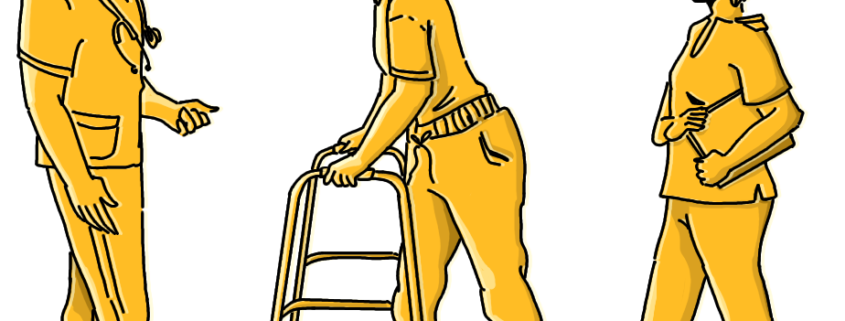Rehabilitation

Overview
Rehabilitation refers to the various treatments and therapies designed to assist patients recovering from illness, surgeries, injuries, or managing chronic conditions. The goal is to restore your physical, sensory, intellectual, psychological and social function. Approximately 53 million Americans live with a disability, many of whom require rehabilitation as part of their routine healthcare.
Types of Rehabilitation
There are several types of rehabilitation, based on the needs of the individual patient:
1. Physical Therapy: Helps restore movement and function, and reduce pain.
2. Occupational Therapy: Helps individuals perform everyday tasks, such as dressing or cooking.
3. Speech-Language Therapy: Assists with communication and swallowing difficulties.
4. Cardiac Rehabilitation: Supports recovery from heart-related illnesses or surgeries.
5. Psychological Rehabilitation: Helps manage mental health conditions and promotes psychological well-being.
Each type of rehabilitation is tailored to meet the individual’s unique needs and goals.
Causes of the Need for Rehabilitation
A range of conditions and situations may necessitate rehabilitation, including:
– Physical injuries or surgeries
– Chronic diseases, like arthritis or heart disease
– Acute conditions, like a stroke or heart attack
– Mental health disorders
– Developmental disorders in children
– Recovery from severe illnesses like cancer
Symptoms Indicating the Need for Rehabilitation
Signs that you may benefit from rehabilitation include:
– Difficulty performing daily tasks
– Persistent pain
– Mobility issues
– Difficulty swallowing or speaking
– Emotional or cognitive issues related to a chronic condition or injury
Diagnosis Acknowledging the Need for Rehabilitation
A healthcare professional will diagnose the need for rehabilitation based on a comprehensive evaluation of your medical history, physical capabilities, mental and emotional status, and personal goals for recovery.
Treatment Options
Rehabilitation programs are custom-designed for each patient and may include a combination of:
– Physical exercises
– Training in specific skills, like speech or balance
– Assisted devices, such as wheelchairs or prosthetics
– Medications for pain management, if necessary
– Counselling to manage emotional challenges
– Nutritional guidance
Living with Rehabilitation
Here are some suggestions to better manage your rehabilitation process:
– Follow-through: Diligently follow your rehabilitation program, even when it’s challenging.
– Nutrition: A balanced diet aids recovery. Your healthcare provider can help design the right diet for you.
– Support: Don’t hesitate to seek emotional support from friends, family, or support groups.
– Medication: Take your prescribed medication regularly and on time.
– Positive Attitude: Maintain a positive outlook. Recovery may be slow, but progress is progress.
When to Seek Help
It’s important to seek medical attention if you:
– Experience severe or increasing pain
- Have difficulty managing daily tasks
– Notice a decrease in your physical, cognitive, or emotional abilities
– Experience anxiety or depression related to your condition or recovery process
Remember, everyone’s path to recovery is unique and determined by many factors. Your healthcare team is there to support you every step of the way in your rehabilitation journey.
